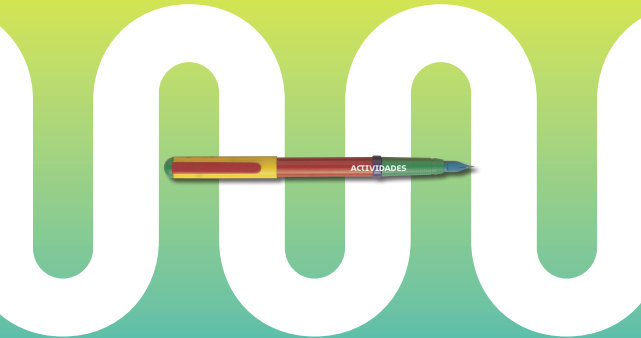Each and every action we take is determined by the bonds we form voluntarily with other people: they are directed at them, come from them and are reinforced by them. Life in a community, whatever form it might take, is an organic means of gaining strength, of learning from and with others and of building resilience when circumstances expose how vulnerable we are on our own. Communities vary widely but all are a collective of people who share a common feeling, energy and language that serve to support and enrich our existence.
Since 2016, the Communities team in the Education Department of the Museo Moderno has organized activities with different collectives with the objective of encouraging greater integration in accordance with their needs, desires and challenges. These activities, many of which continue over time as part of a continuous working system, seek not just provide access to exhibition spaces but also to build a channel of communication and interaction with diverse sectors of the population and so connect with universes that may have seemed off-limits. One of the central pillars of #commonsense is the podcast ‘Collective community glossary’ which will be broadcast during the first two weeks of August to lend greater visibility to artistic projects with a local, communitarian focus that generate emotional and reflexive ties with the museum.
Additionally, the Museo Moderno believes that it is essential to share the space of our virtual platforms with groups of artists and artistic projects that shine a light on the different ways in which communities can be constructed. They all emphasize the power of the collective, be it through working as a group or the construction of a sense of belonging.
Over these two weeks, in addition to the activities run by the Communities Team, the museum will present: a project linked to artistic action, education, feminist activism and social work conceived in 2003 by Fernanda Laguna that today includes a collective of women united by shared emotions and commitment; ‘Proyecto Yungas’, created by Raúl Flores and Piero Sogno, an artists residency that seeks to establish temporary communities and formative networks at the federal level; artworks by Liliana Ancalao and Silvia Barrios, who use poetry, music and anthropology respectively to emphasize the importance of maintaining and promoting the cultural output of Mapuche, Andean and Gran Chaco communities; an exchange with the very different culture of a town in the demilitarized zone between the borders of North and South Korea; a pair of films by Adrián Villar Rojas; and a cooperative of singers
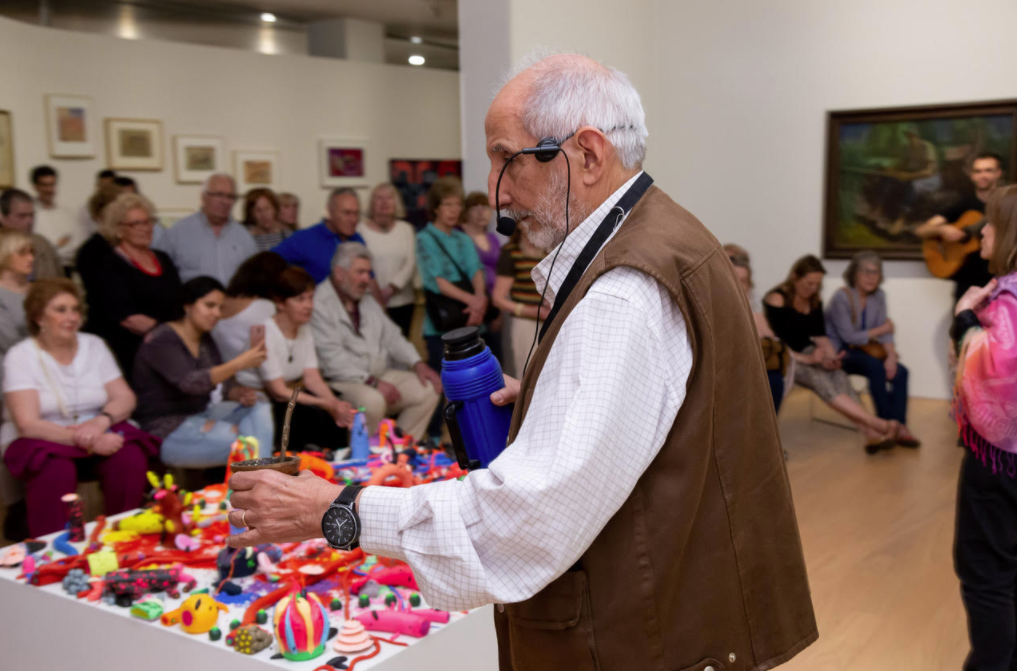
A guest performance by Grupo de los Ocho, a group of elderly performers, within the framework of the exhibition A History of the Imagination in Argentina: Visions of the Pampas, the Littoral and the Andes from the 19th century to the present day, Museo de Arte Moderno de Buenos Aires, 2019.
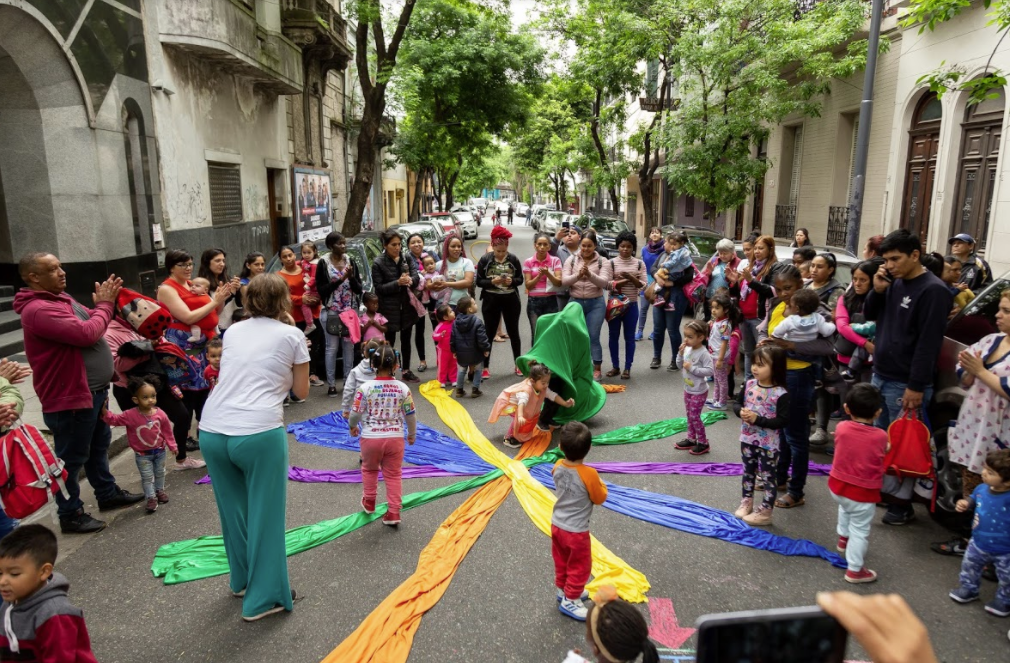
Workshop run by CUJUCA (Congress of Street Games) on the pavement outside CPI Casitas within the Early childhood program run by the Department of Education of the Museo de Arte Moderno de Buenos Aires in collaboration with Arte en Barrios, 2019.
of birdsong known as ‘Asamblea de Pájaros’ (Bird Assembly) run by Sofía Bohtlingk, Julieta García Vázquez and Florencia Rodríguez Giles which expands the idea of community into nature and interspecies perspectives. We will also be presenting Safo (Sappho), a recreation of the cult, underground Argentine film in which the filmmaker Goyo Anchou depicted a panorama of the LGBT community in the early 2000s.
These approaches to different modes of seeing and acting as a community would
seem to confirm that on the path to the collective life for which we all yearn art is one
of the best ways of forging lasting bonds based in new sensibilities, profound dialogue
and fantasies about potential new worlds.
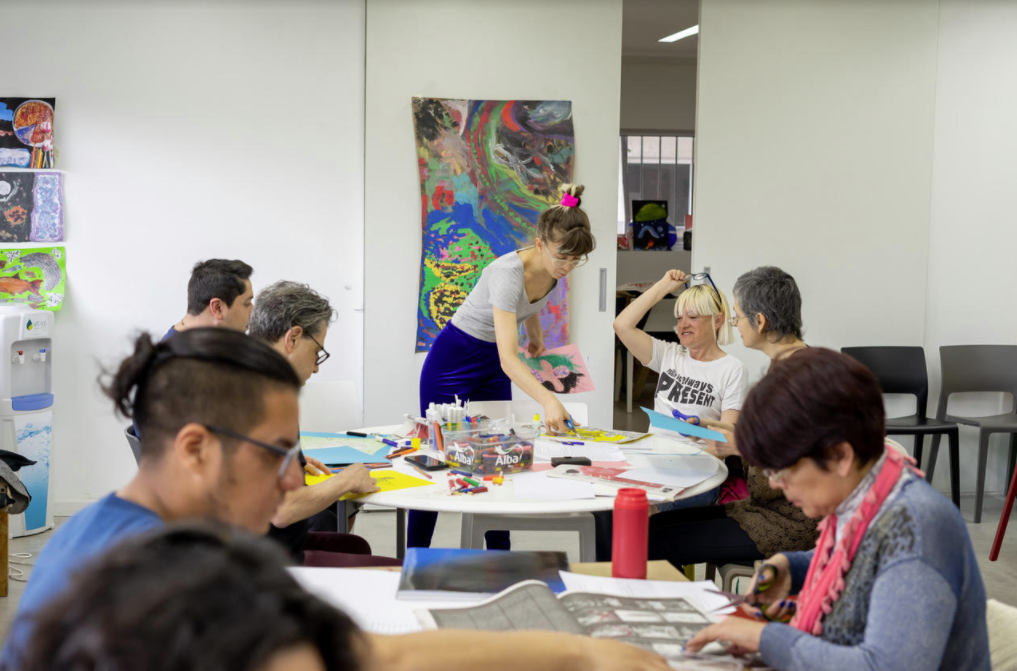
Monster Play workshop run by Florencia Rodríguez Giles, for the Tinkunakuy Art and Mental Health Group at the Hospital General de Agudos Dr. Cosme Argerich within the Mental Health Cultural Inclusion Programme and the Museo de Arte Moderno de Buenos Aires, 2019.

Since 2016 the Education department at the Museo Moderno has been working with the Cultural Inclusion Programme run by the National Department of Mental Health.
The objective of this partnership is to provide a space for artistic production, encounter and reflection with, for and by a community of artists that make use of the mental health services of the Hospital General de Agudos Dr. Cosme Argerich.
Year after year, the emotional bonds between the hospital and the museum, two essential public spaces, have grown and consolidated themselves to break down stigma and reaffirm the power of horizontal work between artists, mental health professionals and museum educators.
Here, we present a record of the process since 2019.
Special thanks go to Florencia Rodriguez Giles @idiano_anatole
The Wiphala flag represents us and brings us together across the Americas and the world. It represents love and respect for the universe, Pachamama, communities and nature.In this tutorial run by Mercedes Iriarte we will learn more about it, what each of its colours represents and its importance as a symbol of our roots.
We invite you to draw fantastical characters through fun steps that encourage
unrestricted creativity.
We share online the book that compiles the work done for the exhibition ABTE 57 x 30.5mm: Fifteen years of railway culture, presented at the Museum of Modern Art of Buenos Aires in 2013. The publication includes an essay curatorial by Javier Villa in conversation with the members of ABTE, as well as essays by Agustín Diez Fischer and Pablo Gregui.
ABTE (Edmondson Type Ticket Grouping) is a moving work of art that carries fifteen years of production dedicated to the investigation of railway graphics, its restoration and the production of works, through actions, interventions, videos, performances, graphics and painting. It was started by Patricio Larrambebere and Javier Martínez Jacques, and is currently made up of Javier Barrio, Martín Guerrero, Patricio Larrambebere, Gachi Rosati, and Ezequiel Semo. ABTE not only is an archive-collection on the railway system in Argentina, but it also proposes activate numerous enclaves of the historical or current railway space signaling loss and change in the landscape that caused the process of concessions, closure and dismantling of the railway network Argentina.
Is it possible to form a community without including other species as members?
Specially commissioned by the #MuseoModernoEnCasa programme, the artists Sofía Bohtlingk, Julieta García Vázquez and Florencia Rodríguez Giles have organized a cooperative of singers in bird language.
The first act of the new community was to create a choral, audiovisual poem. Without ever getting to meet each other in person, the different members sent in videos in which they chirp into the landscape in front of them. It was their first encounter: they were learning about one another not through facial expressions, names or speech but through chirps, burbles and whistles that portray what they see from their state of isolation.
‘Dehumanizing’ language – or practising an irrational, non-hierarchical, purely formal or intuitive language – might serve as training for both new dialogues and interactions with other species as well as to modify the kind of relationship we build between each other.
Sofía Bohtlingk, Julieta García Vázquez and Florencia Rodríguez Giles are visual artists. For several years now, they have been conducting research into different ways of displacing identity. They currently live and work in Buenos Aires.
Goyo Anchou says: ‘It was the spring of 2001, the country was a pressure cooker and a group of kids from the poshest film school in the city shed our technological privileges and headed out to deconstruct a classical story during the last gasp of the Buenos Aires night. SAFO, a drag remake of the classic film starring Mecha Ortiz, seems like a crazy idea between friends, but there is much more to it than that. It was the result of quite an intense debate we were having with the FUC, where I was teaching, about the need to reimagine audiovisual language in terms of aesthetic tradition, production and political needs. This couldn’t be done if we didn’t “forswear all
techniques”, an approach I’d embraced enthusiastically when, in my youthful short films, I bathed my early sexual experiences in glamour but that now seemed mere lip service in the face of the discussions we’d started to have about the need to make “guerrilla cinema”. We’d come to the conclusion that the guerilla cineman had been the only original thing our continent had offered to universal cinema. Guerrilla film, which began on the poverty-stricken periphery of the Cuban revolution and in Argentine underground movements, allowed you to make movies without asking capital for permission, after which it was appropriated (stolen) by the American complex, had its meaning inverted and was then returned to us in the form of music videos, or as a cheap way to make genre movies and increase profit margins. How ironic that such an egocentric and technically perfect music video by Madonna had its origins in the very precarious Now by Santiago Álvarez (made on an extremely low budget from news clips strung together with the noble goal of sparking rebellion among the black population of the USA).
“A perfect technique is immoral in an imperfect world’ was our motto as we went out onto the streets to destroy language with blows of reality. I don’t remember exactly when we decided to make Safo, the temptress, a drag queen or a series of drag queens because back then drag queens and transvestites ruled Buenos Aires, creatures from another world, a natural choice for seducing the innocent protagonist until he gave up his role as a patriarchal kid and surrendered himself to the dissolute embrace of the night.’
Goyo Anchou, a historian and Argentine maker of ‘Guerrilla cinema’. Together with a team directed by Claudio España, he wrote Industria y clasicismo (2000) and Modernidad y vanguardias (2004). He directed SAFO, historia de una pasión (2001), La peli de Batato (2011), Heterofobia (2015) and El triunfo de Sodoma (2020).
This video provides coverage of the cultural project undertaken to document the relocation of residents of Villa 26 implemented by the City Housing Department. The slum was cleared on the orders of the Supreme Court in a legal ruling known as the Mendoza Case, which decrees that the shores of the Riachuelo must be cleared. The book La 26 arose out of this initiative featuring photographs by Gian Paolo Minelli and texts by Leonardo Sabbatella, who worked with the community during the process.
Featured in the video are Pablo Méndez, Leonardo Sabbatella, Gian Paolo Minelli, Cristian Javier Cardozo, Robert Gabriel Perdomo Dalmao, Gonzalo Aguilar and Juan Carlos Urrutia. Director and screenplay: Gonzalo Aguilar.
A 45-minute visual record of an ancestral festival of the Wichi, Chorote, Nivaklé Ava Guaraní and Chané peoples. The ritual had not been performed for fifty years because the music, a fundamental part, was banned at the time and could only be preserved outside of the communities to which it belonged, in the wilderness or on stage in Argentine or European theatres. Directed by Paulo Campano from a script by Federico Aguilar, Paulo Campano and Silvia Barrios (part of the Indigenous Argentina project that has been running for over thirty years by Fundación Norte under the direction of Silvia Barrios).
The poet Liliana Ancalao reads her works in two languages that form part of her heritage: Mapuzungun and Spanish. Through her poetry and the revival of the language of her Mapuche ancestors, Ancalao builds a universe that inevitably contains both a personal history and the age-old story of the Mapuche community.
We pay homage to the Yungas Project, a space of residencies that for almost a decade has been encouraging creativity among communities of artists as part of a federal, inclusive outlook. Yungas is a workshop where creative processes are shared to offer training and raise visibility.
The Yungas Project is a nomadic platform that provides grants for training, production and thinking by young artists from across the country. The intention is to stimulate, inspire and encourage not just artists at the beginning of their careers, but also the spaces and collectives where they come together. It was created by Piero Sogno and Raúl Flores nine years ago and has taken place across six editions in Mendoza, Tucumán, Corrientes, Córdoba, Tigre and Buenos Aires as well as organizing events, residences and festivals. For the past two years, it has also run the Yungas Haus, a centre in Villa Nougués, Tucumán.
The +60 Moderno Programme develops projects for and with elderly people in accordance with the philosophy of an active old age. The activities are aimed at undermining stereotypes associated with old age and rethinking this stage of life as one of activity and creativity. In September 2019, the Imago Mural workshop was held (run by the teacher, graphic designer and illustrator Juan Puerto) with a group of elderly people at the PAMI Balcarce Residence in the streets around the museum. We present documentation of the experience.
Belleza y Felicidad Fiorito is a cultural and educational project that uses art and feminist activism to improve life in the Villa Fiorito neighbourhood. In this video, some of its members explain how their community was built with an emphasis on learning, a lack of hierarchy and emotional togetherness.
Belleza y Felicidad Fiorito is made up of: Gisella Rivas, Victoria Musotto, Lucía Reissig, Larisa Zmud, Daniela Iwaniuk, Claudia Giménez, Franco Mehlhose, Julia Díaz, Micaela Iribarren, Maru Pensa, and Fernanda Laguna.
Belleza y Felicidad Fiorito is a cultural and educational project that started in 2003 on the initiative of the artist Fernanda Laguna in Villa Fiorito, in the Lomas de Zamora district. It was initially organized to support a community kitchen through the creation of an art gallery and promote workshops for children. Today its activities are based around three central themes: culture, work and activism; the cultural side includes workshops, events and festivals, publication of magazines and albums and running the art gallery. The work aspect involves a women’s cooperative that produces t-shirts and silk-screened products. The activism involves activities organized as part of the Comedor Gourmet and Ni una menos Fiorito, a women’s collective organized in 2008.
Vera Veiga tells us the Guaraní legend of yerba mate, with illustrations by the Membrilla craft publisher, which employs the Japanese Kamishibai (paper theatre) technique.
Vera Veiga is a storyteller, kindergarten teacher and puppeteer. She currently works at the Vocational Art Institute. She is a member of the group Valijas en cuento, with whom she travels to rural and urban schools giving literature and kamishibai workshops.
Her work can be seen on facebook.com/labocareciclante/
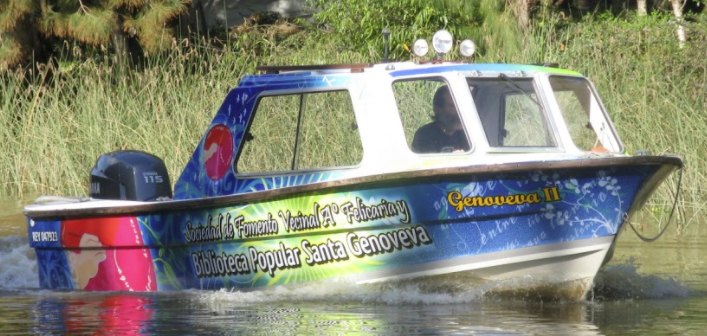
From the Listen [Visual Sounds] cycle, curators Jorge Haro and Leandro Frías have prepared a playlist with a series of albums published on Spotify by members of the so-called “Argentine sound-experimental community”. A body asset of aesthetics, outside the spaces legitimized and visualized by the industry cultural, that have an innovative spirit, generator of “sound novelties” and that, For more than twenty years, they have been the staple of programming in the Museum of Modern Art. In the list you will find from materials of the eighties to sounds produced today.
Words take on new meanings as their contexts change over time. Sometimes, a dispute over the meaning of a word can be a means of exposing social tensions and the ways in which we build our identity and communities. The Collective Glossary of Communities is a project that works with these meanings in order to imagine potential new worlds.
Therefore, we invited the members of ten collective artistic projects in Argentina to choose a word as a starting point for describing their artistic practice and narrate their creative experience.
Text by: @hombresurreal
[email protected]
Facebook: /frentedeartistas.delborda
The Frente de Artistas del Borda (Borda Artists Front) is an artistic, social, autonomous movement that since 1984, has produced art as tool in the fight for de-asylumization to propose alternatives to incarceration in the José T. Borda Psychiatric Hospital. Their practices seek to question society’s perceptions of madness and to encourage the development of a process by which the asylum is replaced by a network of community institutions where people can receive mental health care.
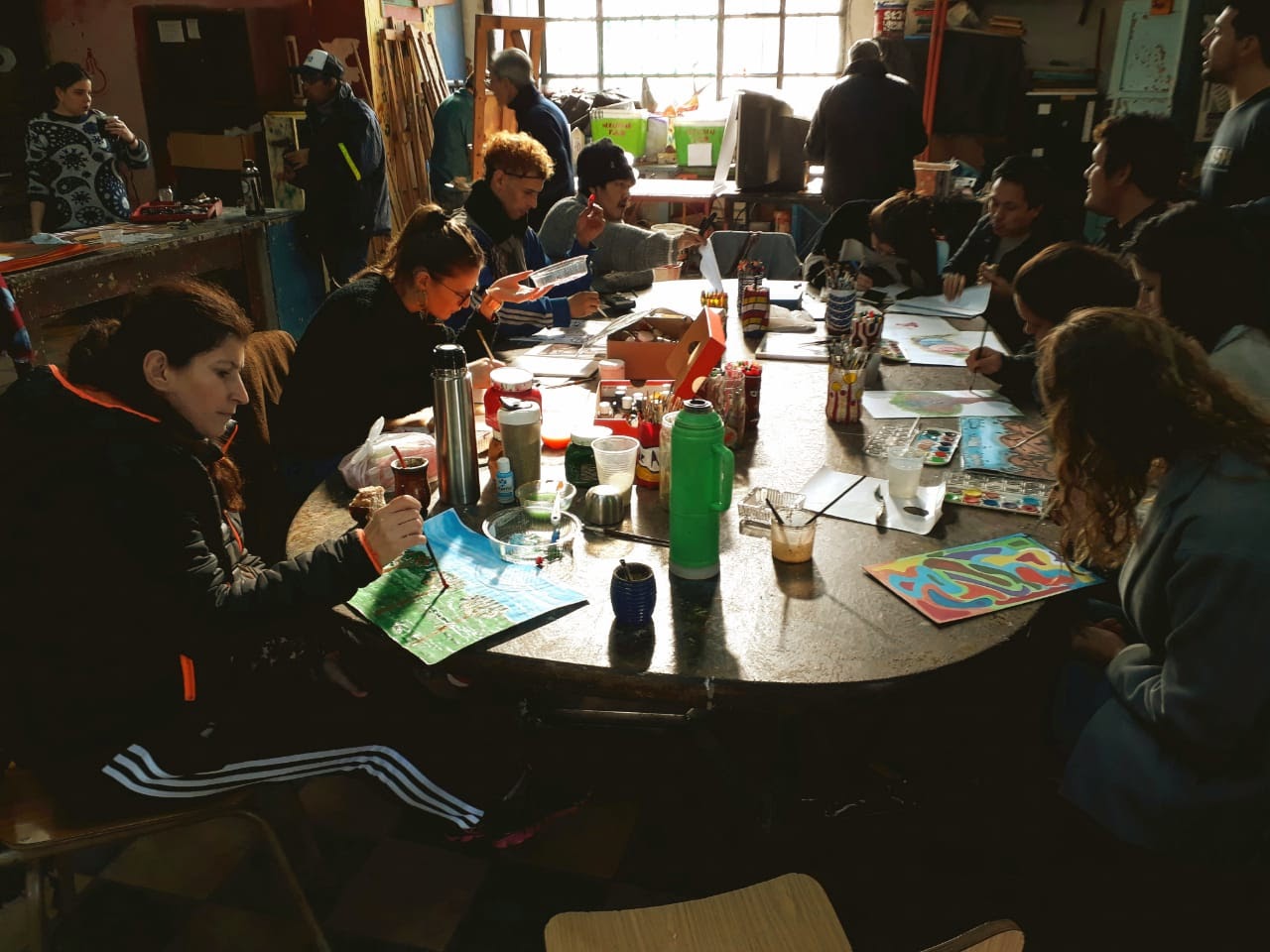
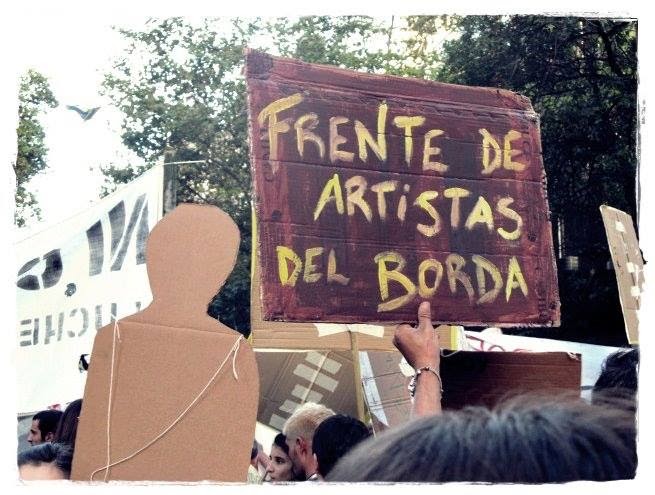
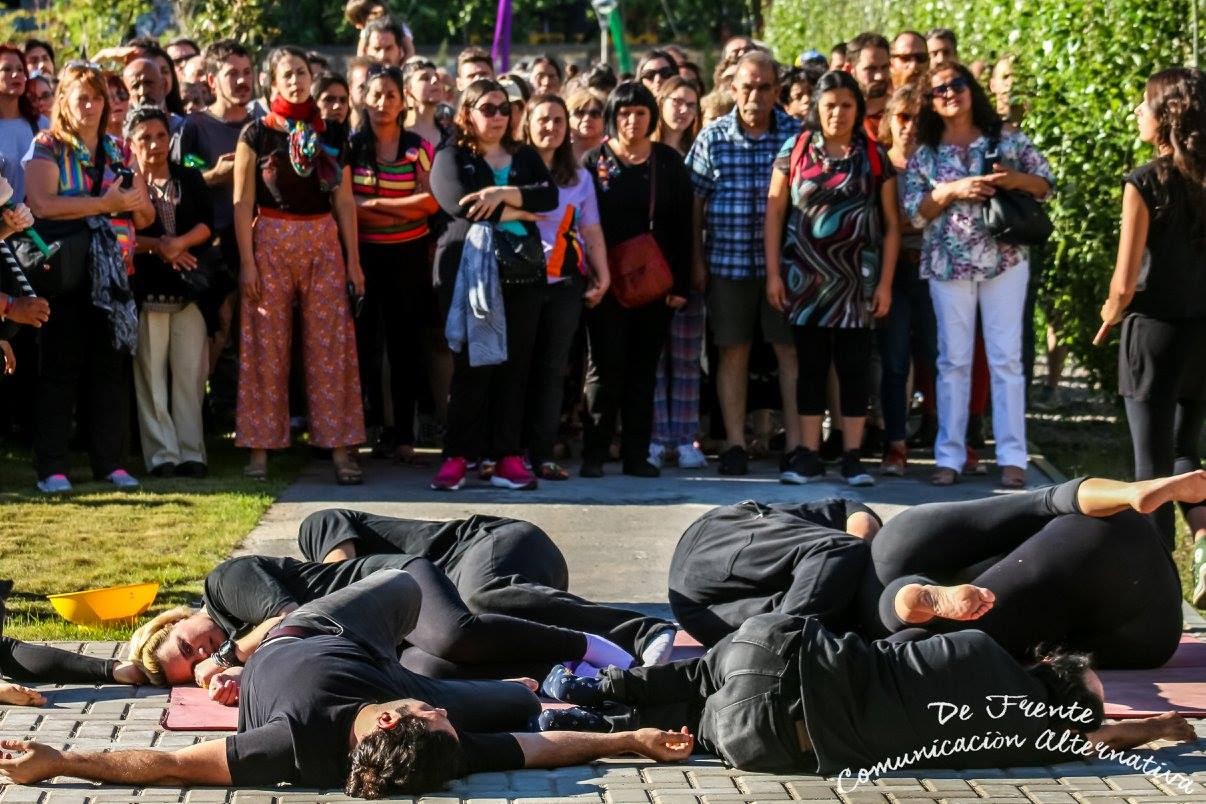
Images: documentation of three activities carried out by the Frente de Artistas del Borda in the City of Buenos Aires
Text: @hombresurreal
Find out more about this project at:
Instagram: @vivasnosqueremos.argentina
‘Vivas nos Queremos’ (We want us alive) is a graphic campaign that calls on women to express themselves through images made using xylographic techniques in order to raise awareness and protest against violence against women. The images made by people answering the call are transformed into engravings and posters that become part of a campaign that defines itself as ‘autonomous, sisterly, dissident and street graphics’ under the slogan: ¡Vivas nos queremos! (We want us alive!)
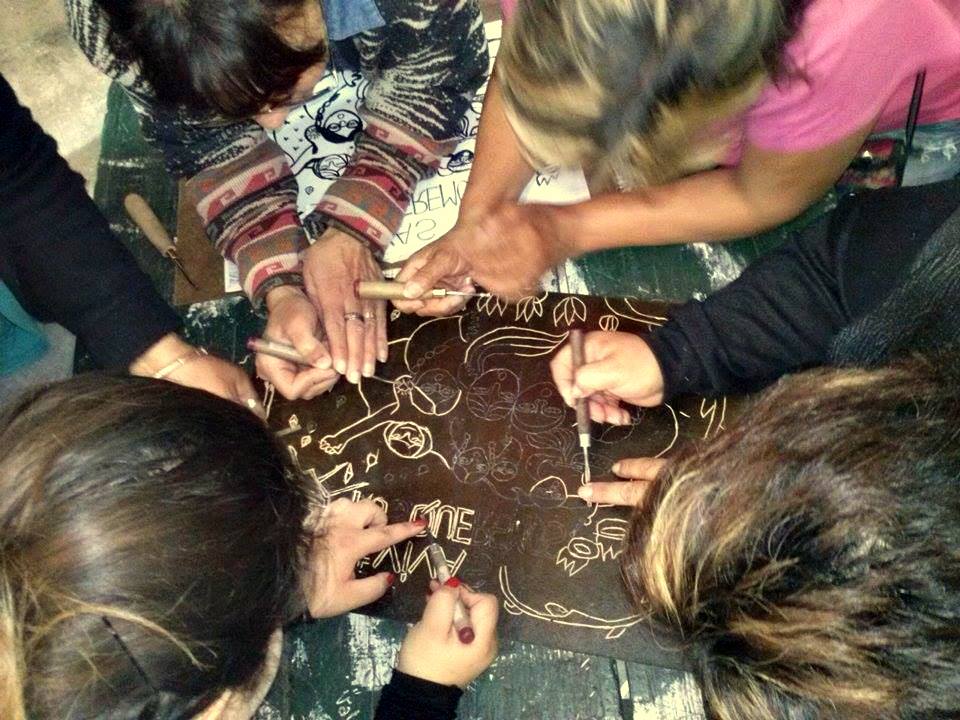
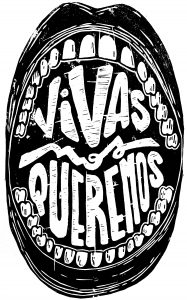
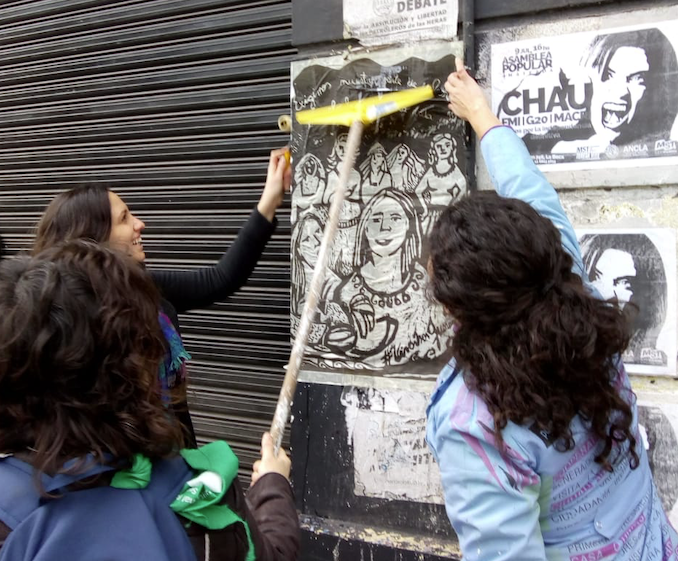
Images: The campaign in action. A record of work carried out in the public sphere and collective workshops.
Text: @hombresurreal
Find out more about the project at:
Instagram: @orembiapomaepora
Orembiapo Maepora is a group of female Chané ceramicists and painters that form part of the Tutiatí Community in Campo Durán, Municipality of Aguaray, Salta Province. In Chané, the name of the group means ‘our work is beautiful’. Today its members are Lilia López, Felisa Ruiz, Claudia Sánchez, Gabriela Orio, Eli López, Vicenta Ovando, Alicia Saravia and Ester López. One of their projects is to build a community ceramics workshop in order to share their knowledge with young people from the town and elsewhere.
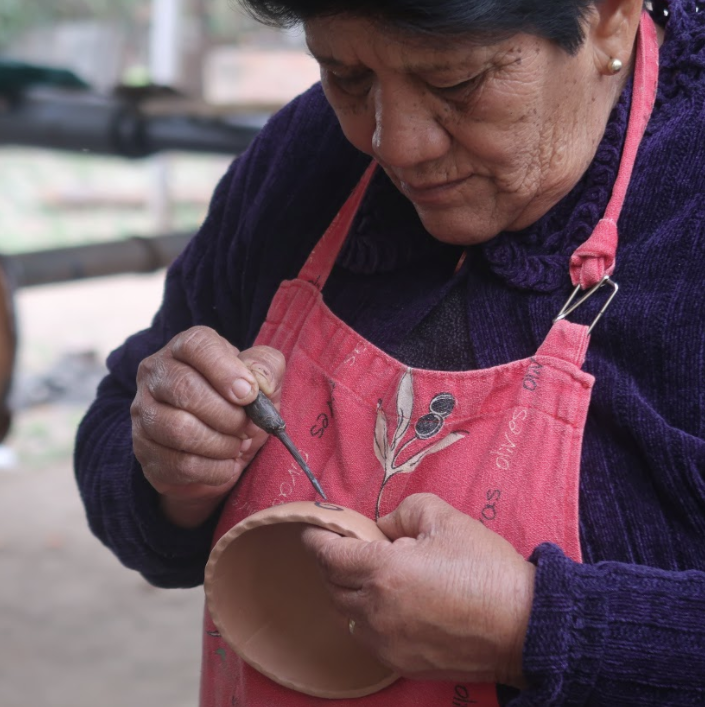
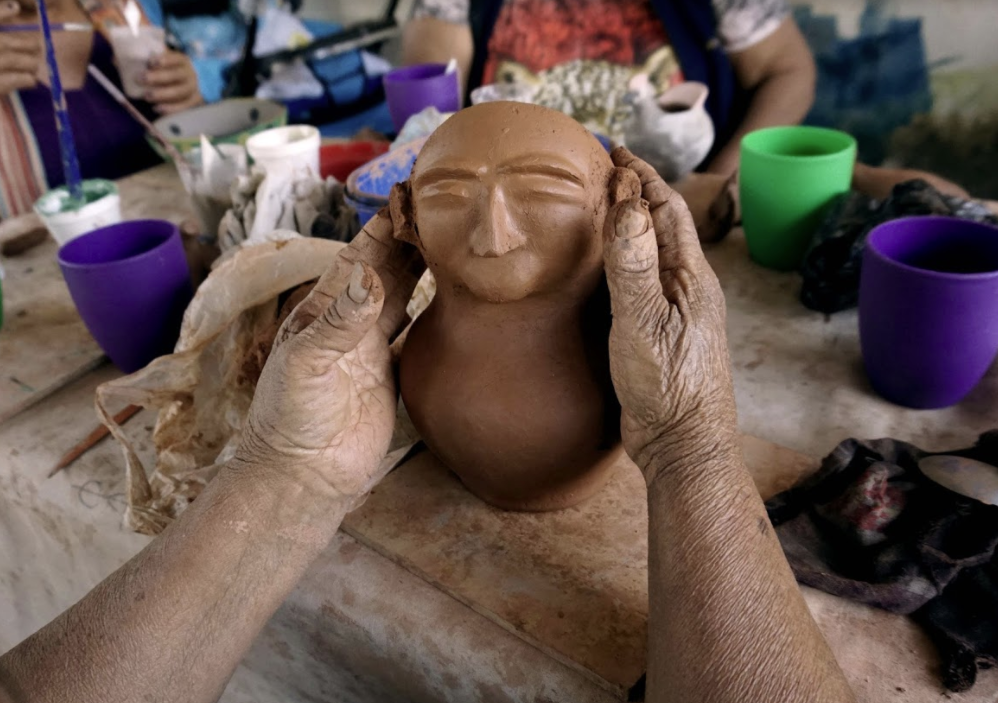
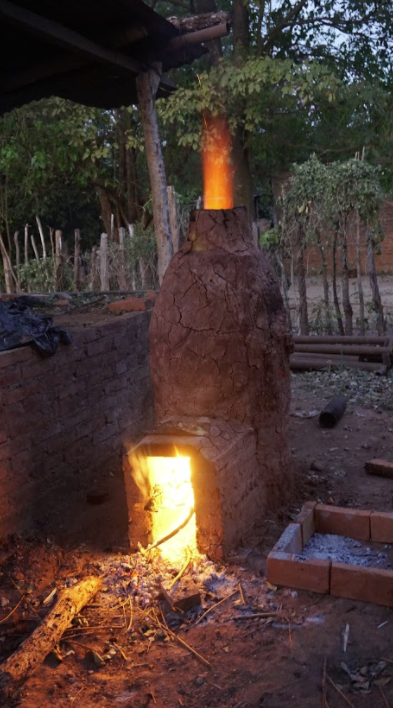
Images: The working methods of the women of Orembiapo Maepora (Photography: Andrea Fernández, Florencia Califano, Pablo Curuchet, Milagro Tejerina, Claudia Reinoso and Berny Garay Pringles)
Text: @hombresurreal
Find out more about this project at: uraurdaneta.art.blog
Viva Estampa, The Moyano Hospital’s cultural collective, carries out
relationship-based activities and artistic practices that challenge stigmas
and seek to build a more inclusive community. It is part of the Mental Health
Social Inclusion Programme.
Viva Estampa is a cultural collective in the Events Department at the Hospital Moyano run by the Museo Sívori. The goal is to develop artistic, social, emotional and communicative skills and to encourage citizenship in addition to challenging prejudices and stigma, especially those related to mental health issues. With the objective of building an inclusive community, it develops relationship-based artistic practices such as the Experimental Art Workshop and the Object Memory Workshop. It is part of the Cultural Inclusion Programme run by the General Department of Mental Health of the City of Buenos Aires which encourages ties between museums and mental health spaces through practices that promote new relationships.
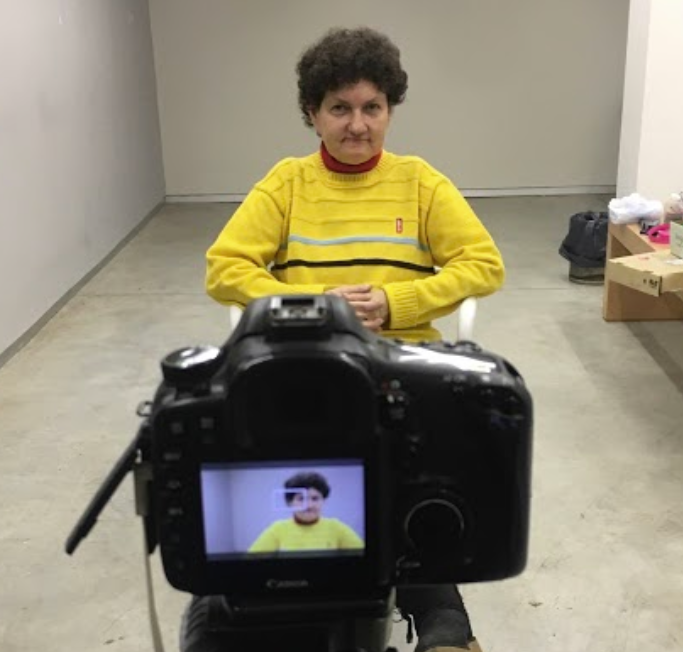
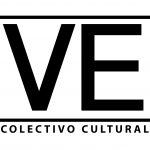
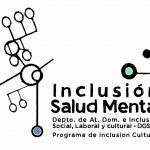
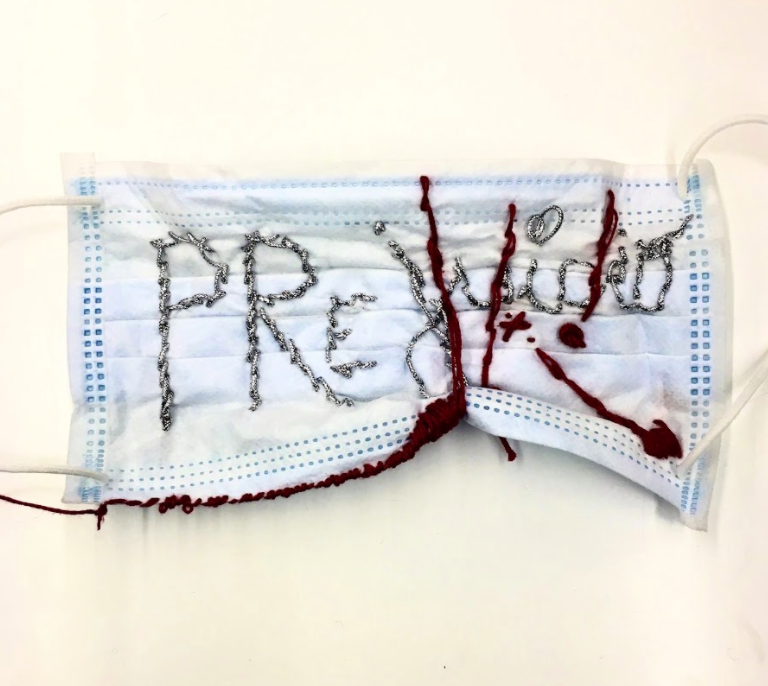
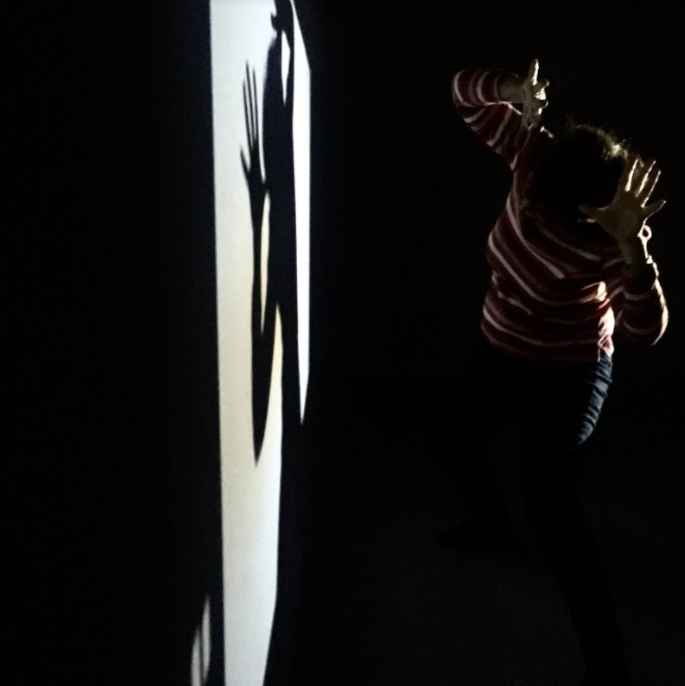
Images: Viva Estampa Collective Workshop
Text by @hombresurreal
proyectomartingarcia.tumblr.com/
www.youtube.com/channel
[email protected]
Proyecto Martín García, run since November 2017, is a platform that brings together artists and thinkers to reconsider the symbolic value of Martín García Island through artistic practice workshops and participative community and reflexive actions in close collaboration with the teaching team at Escuela Secundaria N°7 Cacique Pincén. Together with the Community Museum of Maciel Island and the Puerto Piojo Museum it also saw the formation of the Centro de Investigaciones Ribereñas (Riverscape Research Centre, CIR), with the support of the Fundación Williams. The Project currently coordinates remote activities, virtual workshops, videoconferences and collaborative audiovisual workshops.
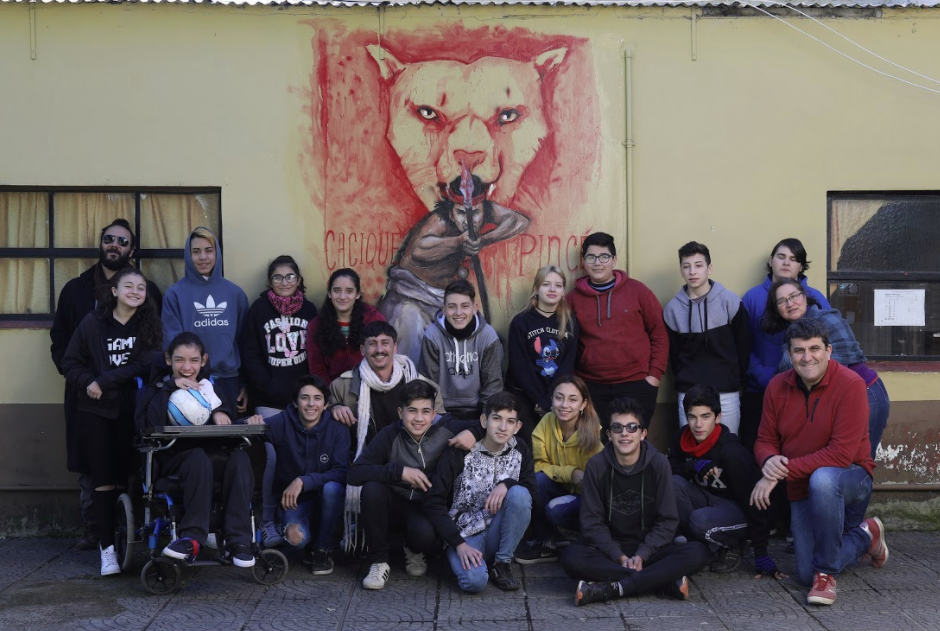
A Mural of Cacique Pincen coordinated by Diego Pogonza. Photos: Javier Barrio
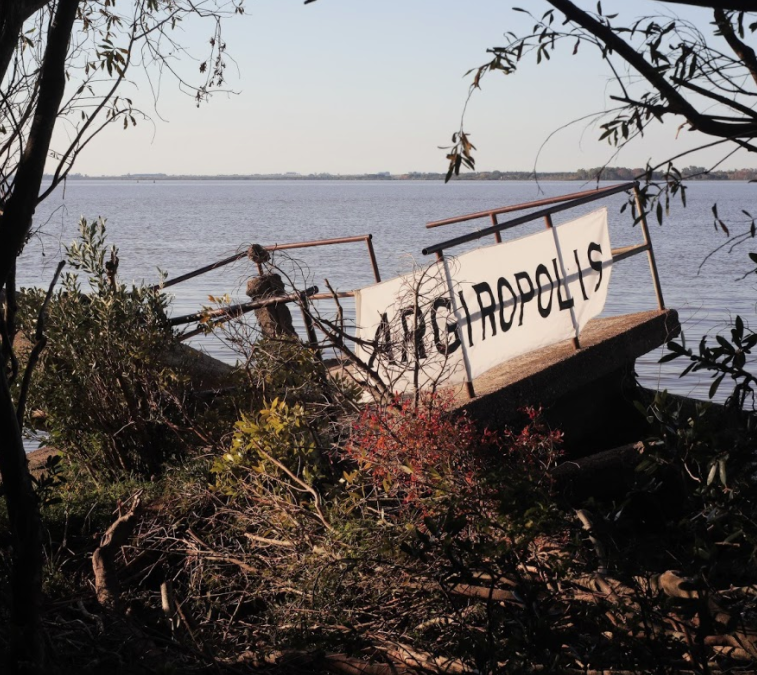
Argiropolis, action by Javier Barrio from the specific site of Martín
García Island. Photos: Javier Barrio

Astrophotography Workshop coordinated by Rodrigo Alcon Quintanilha.
Photography: Javier Barrio
Conocé más sobre el proyecto en:
Youtube: www.youtube.com/channel/
Web: archivovilla20.com.ar/
The Archivo de la Memoria Popular Villa 20 (Villa 20 Popular Memory Archive) generates spaces of exchange between residents with the objective of producing historical narratives from the past and present and to preserve memory as an active, collective act. It arose out of the Workshop of Cinema and Memory, run in the neighbourhood since 2018. They currently perform different activities: gathering and digitizing materials, organizing shared tables of memory and exhibitions at neighbourhood schools as well as audiovisual exercises in which a joint gaze is developed about the present status of the community.
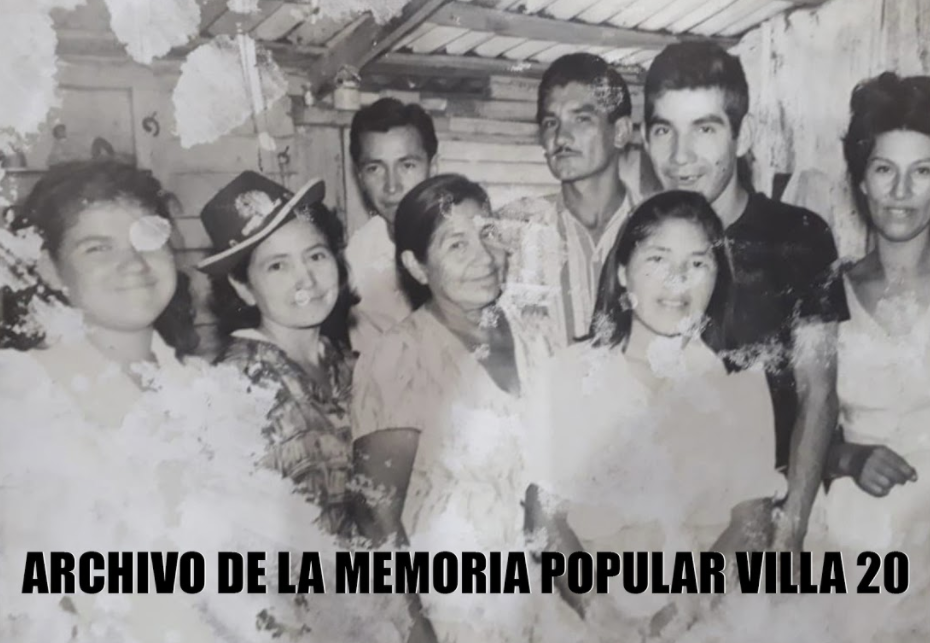
Mural del Cacique Pincen coordinado por Diego Pogonza. Fotos: Javier Barrio
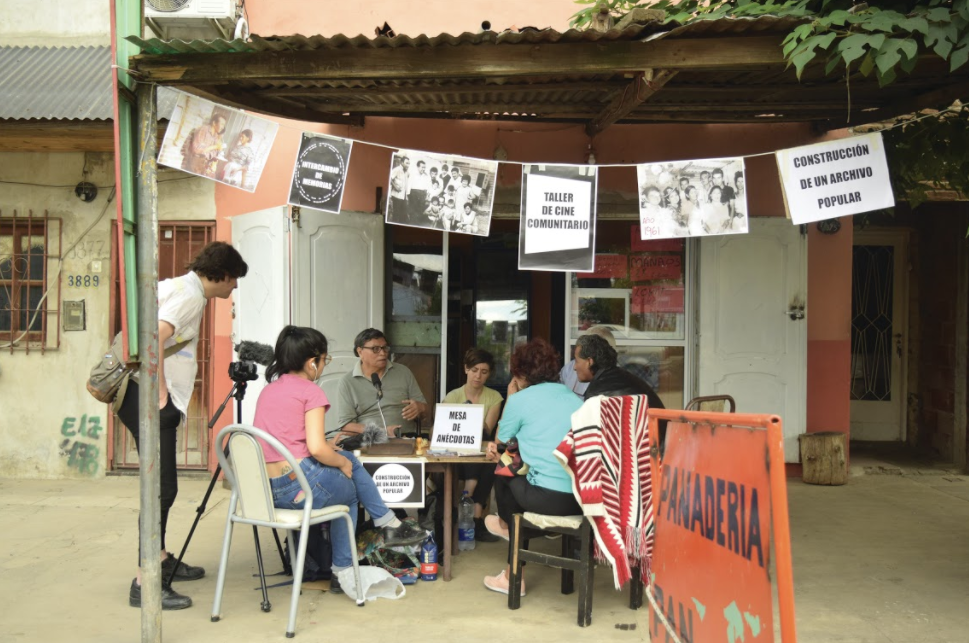
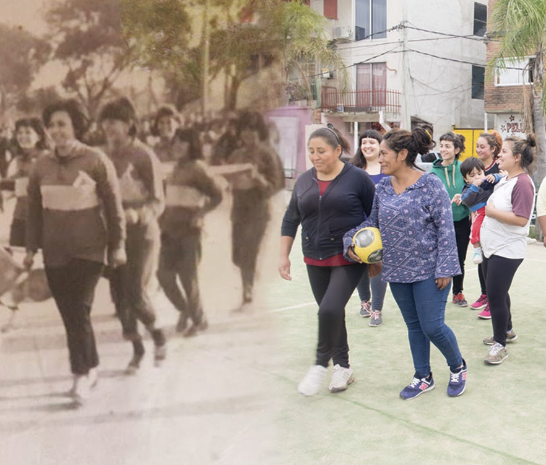
Publications and activities carried out by Villa 20
(Photography: Archivo de la Memoria Popular Villa 20)
Text by: @hombresurreal
Find out more about this project:
Facebook: /MuseoDelObjetoContemporaneoMoc
Instagram: @mocmuseodelobjetocontemporaneo
Laura Andreoni, Virginia Corda, Paula Doberti, Luis Espinosa, Luján Funes and Juan Carlos Romero, artists at the Museo del Objeto Contemporáneo (Museum of the Contemporary Object, MOC), generate collections of objects in different ways. The MOC researches and exhibits works by artists that register, collect and archive very different materials. Born in 2009, this is a museum lacking a headquarters, legal status, certification or staff. According to its members, it can be conceived as a conceptual artwork: a fictional museum where a distinctive way of understanding the world of objects is developed.
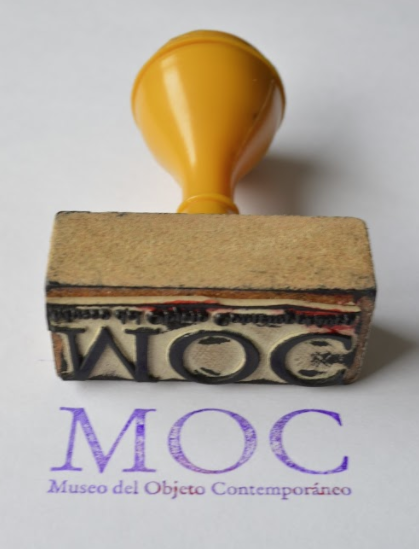
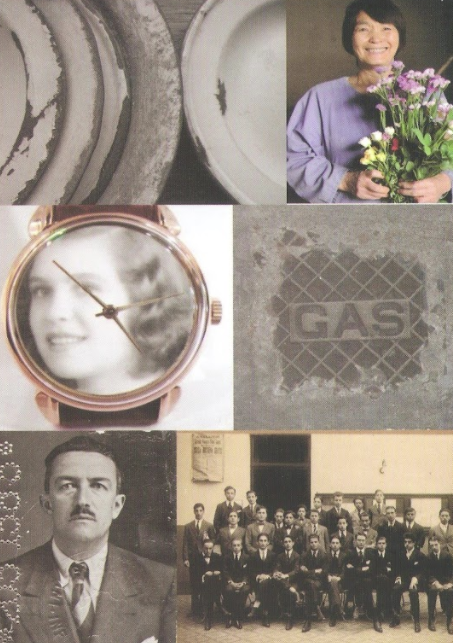
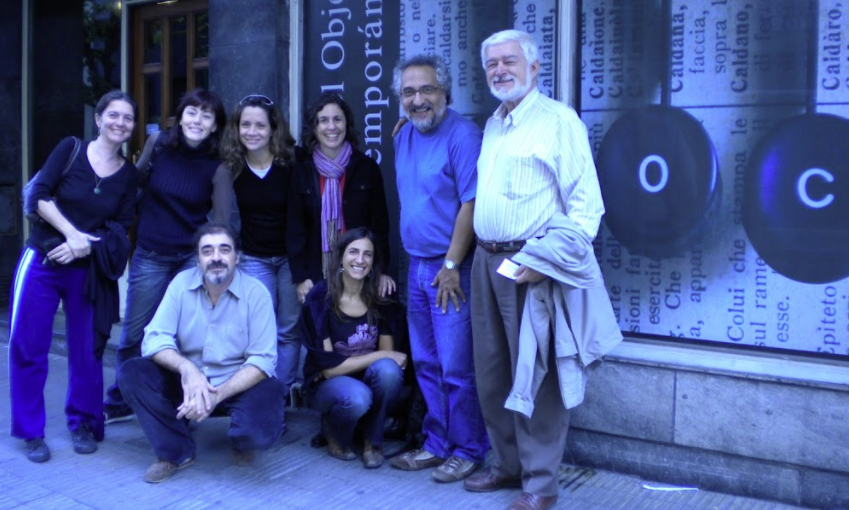
Images: Imaged from the archive of the Museo del Objeto Contemporáneo
Text by: @hombresurreal
Find out more about this project:
Facebook: /Orilleres/
Instagram: @orilleras_feminismopopular
Orilleres is a cultural group dedicated to advocacy and social organization through artistic work. Made up of artists from Villa 21/24, from the Buenos Aires neighbourhood of Barracas, it is an autonomous, working class group that practices feminist serigraphy that creates its own designs to communicate its cause and organization in addition to raising awareness of social problems. It also develops the space ‘Jóvenes y memoria’ (Young People and Memory) working with socially vulnerable children from the neighbourhood.
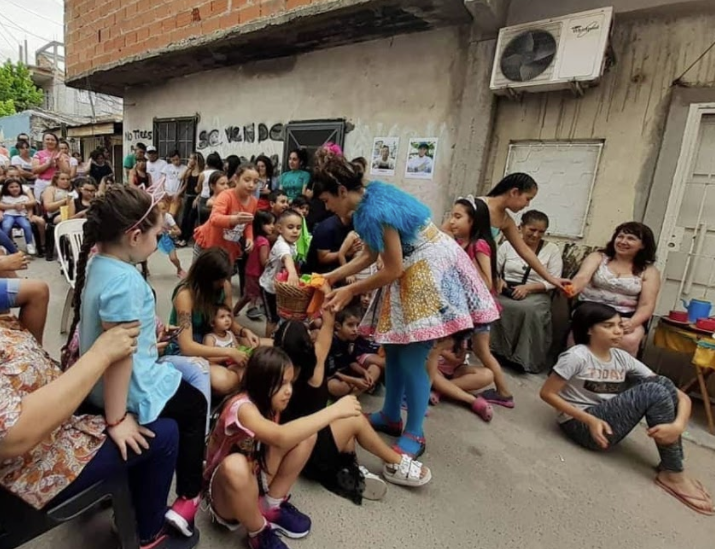
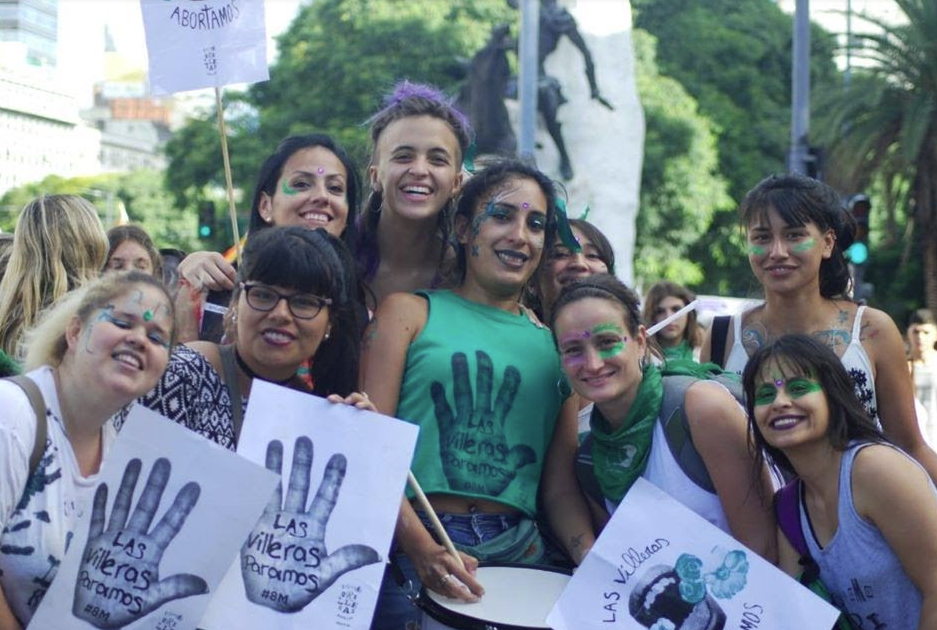
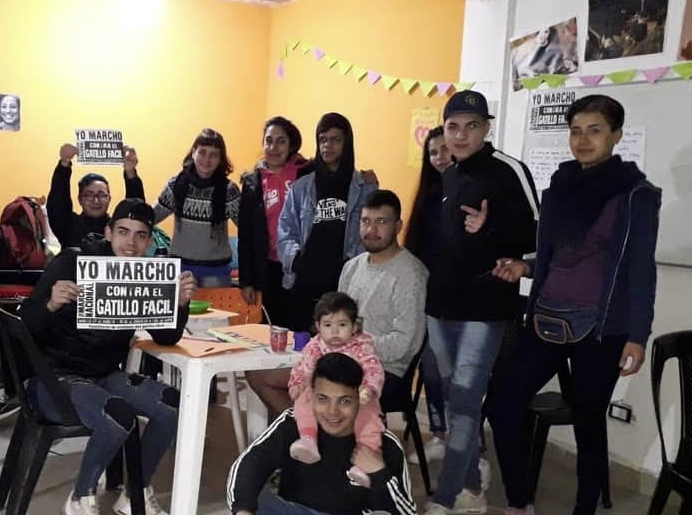
Imágenes: Imágenes pertenecientes al archivo del Museo del Objeto
Contemporáneo
Edición: @hombresurreal
Barrio sin Plaza is a contemporary art collective founded by Ariana Beilis and Malcon D’Stefano. It works with public spaces in the Villa del Parque neighbourhood of the City of Santa Fe. Their artworks arise out of collaborative work between artists, cultural managers, neighbours and local institutions. Since 2017 it has run ‘A la Cal’, a nomadic exhibition space run in public spaces. The collective was declared to be of Interest by the local Council and the House of Representatives of the Province of Santa Fe, for its non-profit regional work and cultural administration. It has also received numerous distinctions and grants from provincial and national institutions.

Opening of Sound Emplacement. Day Centre in the Villa del Parque
neighbourhood, September 2017. Photography: Colectivo Barrio sin
Plaza archive.
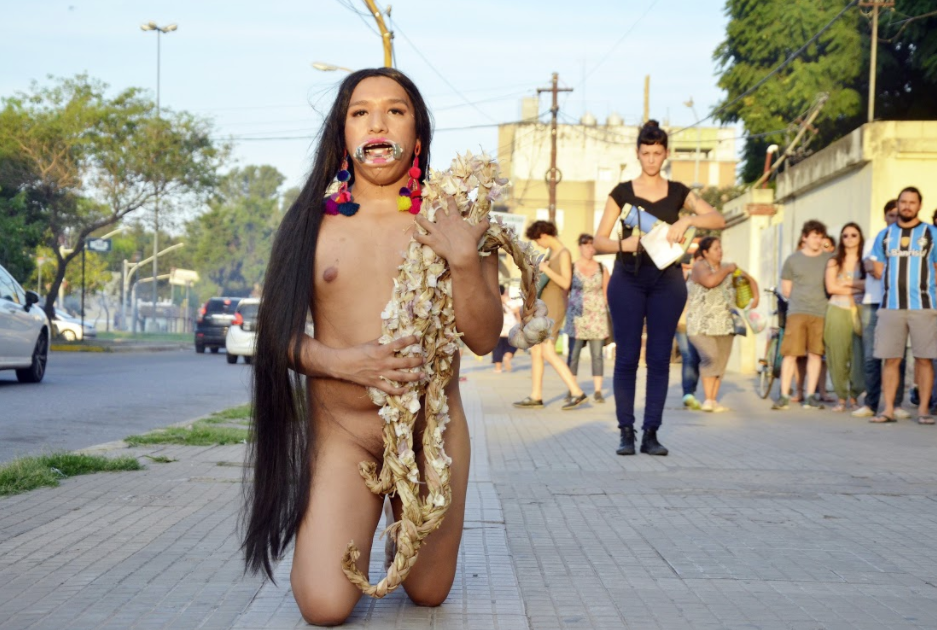
Exercises to acknowledge absences, an exhibition by Mauricio Pobletecon
curated by Cintia Clara Romero, April 2018. Photography: Mailen Bargerter.
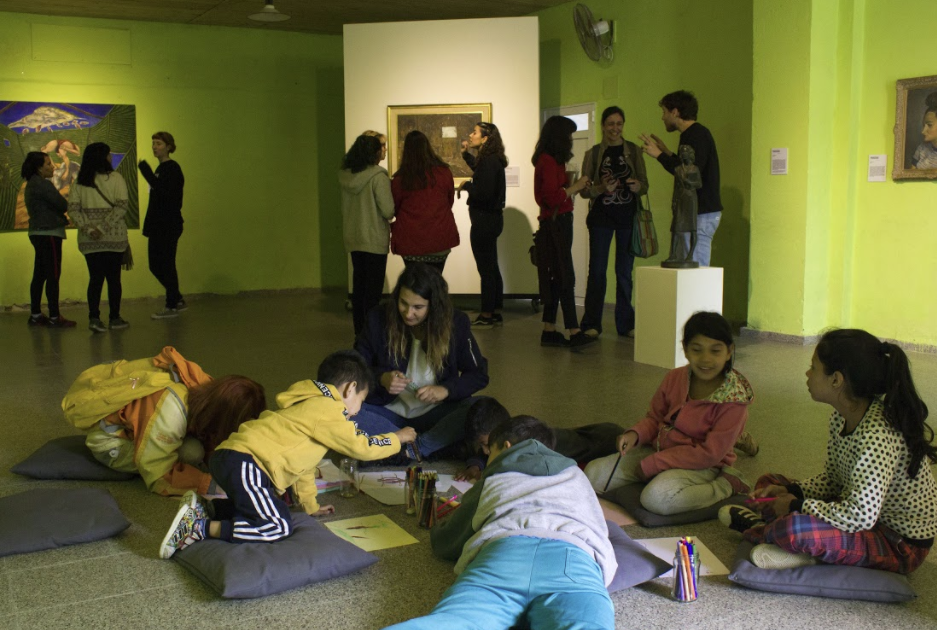
Exhibition of Heritage by MPBA Rosa Galisteo de Rodríguez in the
Neighbourhood Association of Villa del Parque as part of the Trueque artwork,
October 2018. Photography: Colectivo Barrio sin Plaza Archive.
Edición: @hombresurreal
This community project is a collective creative space created and shared by Anita, one of the residents, who took part in ‘Caleidoscopio’, a workshop given at the Museo de Arte Moderno. Following this experience, Anita began her own at the PAMI Balcarce Residence, to share her practices with her fellow residents. Since then, the museum has run an Artists’ Programme developed specifically by the Communities Section in the Education Department run within the Residence consisting of monthly meetings where a contemporary artist is invited to offer new perspectives and exchanges between different disciplines.
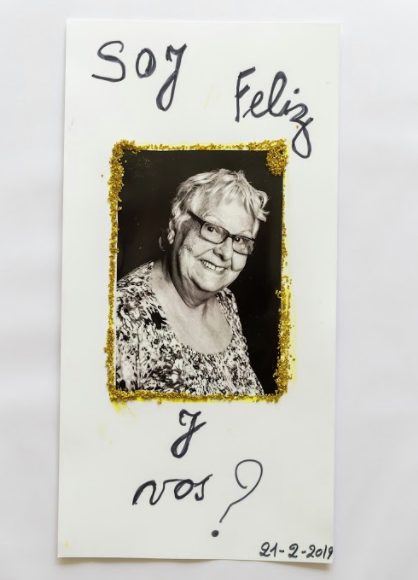
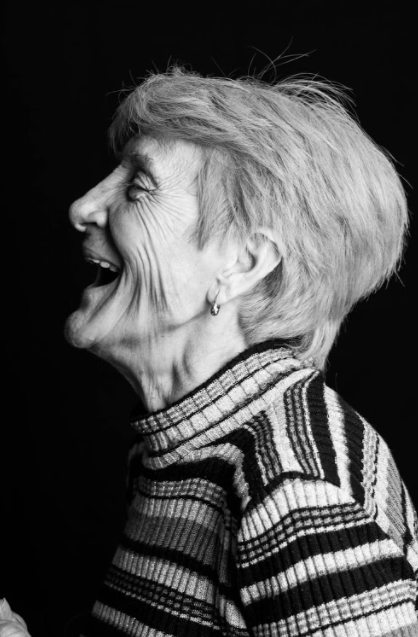
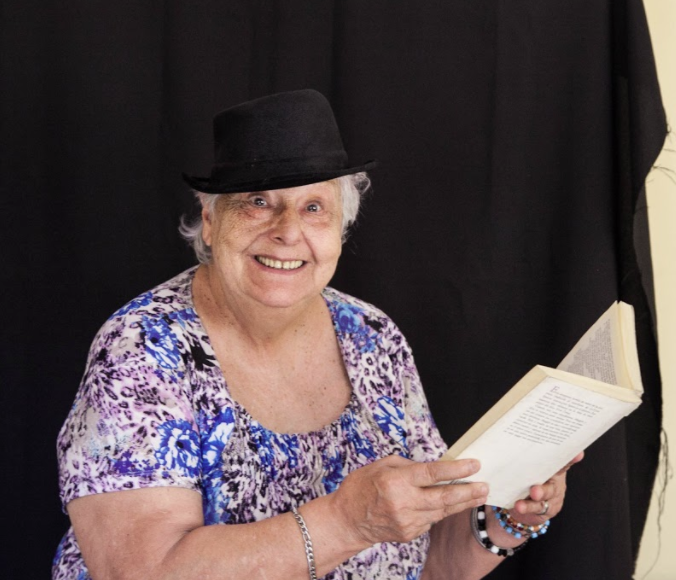
Documentation of workshops run by the Artists’ Programme at the PAMI
Balcarce Residence organized by Catalina Bartolomé and Juan Puerto.
Photography by Guido Limardo.
